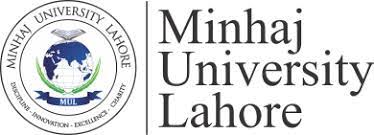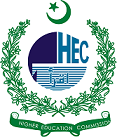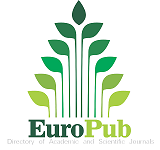Investigating the Institutional Quality Integration with Islamic Banking Development in Promoting Entrepreneurship
DOI:
https://doi.org/10.58932/MULD0011Keywords:
Islamic financial intermediation, New business density, Panel quantile regressionAbstract
Empirically, conventional finance has proven insufficient while providing the required finance for startups and entrepreneurs. While handling the risks, entrepreneurs tend to avoid the high-cost nature of the debt, which limits their true potential leading to sub-optimal resource utilization. For this, Islamic finance provides a participative and equitable alternative for new ventures with proven merits, but a lack of regulation hinders its penetration among entrepreneurial aspirants. This study investigates how Islamic finance assists entrepreneurial decisions and the role of institutional quality in aligning Islamic law with commercial law requirements. This study selected the unbalanced panel data of 37 countries between 2011 and 2020 and used panel quantile regression to estimate the quadratic Islamic financial development effects and the moderation of institutional quality. The results showed that generally, Islamic financial development has a U-shaped relation with entrepreneurship, but with the improvement in institutions, the U shape is flipped to inverted-U shape. This study points toward the potential of Islamic financing when coupled with better regulations for the economies which are developing the nascent Islamic financing system.
References
Abdul Halim, Z., How, J., Verhoeven, P., & Hassan, M. K. (2020). Asymmetric information and securitization design in Islamic capital markets. Pacific Basin Finance Journal, 62. https://doi.org/10.1016/j.pacfin.2019.101189
Abubakar, J., AlQashouti, B. M. H. A., Aysan, A., & Unal, I. M. (2022). Is Islamic Finance A Panacea for Global Economic Disruptions after COVID-19 Outbreak? SSRN Electronic Journal. https://doi.org/10.2139/ssrn.4085941
Adam, N. J. (2005). Sukuk: A Panacea for Convergence and Capital Market Development in The OIC Countries. Islamic Economics and Banking in the 21st Century: Proceedings of the 6th International Conference on Islamic Economics and Finance, 2, Vol. 2.
Ahmed, F. (2021). Assessment of Capital Market Efficiency in COVID-19. European Journal of Business and Management Research, 6(3), 42–46. https://doi.org/10.24018/ejbmr.2021.6.3.839
Citaristi, I. (2022). Islamic Development Bank—IsDB. In The Europa Directory of International Organizations 2022 (pp. 665–667). Routledge.
Dusuki, A. W. (2010). Do equity-based Sukuk structures in Islamic capital markets manifest the objectives of Shariah? Journal of Financial Services Marketing, 15(3), 203–214. https://doi.org/10.1057/fsm.2010.17
Haider, J. (2010). Islamic Capital Market : Sukuk and its Risk Management in the Current Scenario. Reading Research Quarterly, 09(05), 1–69.
Han, J., Kang, H. J., Kim, M., & Kwon, G. H. (2020). Mapping the intellectual structure of research on surgery with mixed reality: Bibliometric network analysis (2000–2019). Journal of Biomedical Informatics, 109(January), 103516. https://doi.org/10.1016/j.jbi.2020.103516
Hussain, T., & Khalil, M. N. (2019). Shari ’ah Issues in Islamic Capital Markets of Pakistan. Journal of Islamic Thought and Civilization, 9(1), 89–105. https://111.68.103.197/index.php/JITC/article/view/118
Issoufou, C., & Oseni, U. A. (2015). The application of third party guarantee in structuring Ṣukūk in the Islamic capital market: A preliminary literature survey. Mediterranean Journal of Social Sciences, 6(5), 130–138. https://doi.org/10.5901/mjss.2015.v6n5p130
Khan, S. S. A. (2012). The role of IDB in Islamic capital market development. In The Islamic Debt Market for Sukuk Securities: The Theory and Practice of Profit Sharing Investment (pp. 193–205). Edward Elgar Publishing Ltd. https://doi.org/10.4337/9780857936219.00024
Kolapo, F. T., Adaramola, & a, O. (2012). The Impact of the Nigerian Capital Market on Economic Growth (1990-2010). International Journal of Developing Societies, 1(1), 11–19. https://www.isdsnet.com/ijds-v3n4-17.pdf
Lahsasna, A., Kabir Hassan, M., & Ahmad, R. (2018). Forward lease sukuk in Islamic capital markets: Structure and governing rules. Forward Lease Sukuk in Islamic Capital Markets: Structure and Governing Rules, 1–285. https://doi.org/10.1007/978-3-319-94262-9
Lam Jian Wyn. (2021). Highlights of the SC Annual Report 2021 | The Edge Markets. https://www.theedgemarkets.com/article/highlights-sc-annual-report-2021
McMillen, M. J. T. (2006). Islamic capital markets: developments and issues. Capital Markets Law Journal, 1(2), 136–172. https://doi.org/10.1093/cmlj/kml015
Muneeza, A. (2018). Establishment of Islamic capital market in jurisdictions with limited Islamic financial services: Case study of Maldives. International Journal of Law and Management, 60(2), 373–385. https://doi.org/10.1108/IJLMA-12-2016-0146
Muzahid, M. A. U., & Sadat, I. (2016). Problems and Prospects of Islamic Capital Market In Bangladesh. International Journal of Ethics in Social Sciences, 4(2), 55–62. http://www.crimbbd.org/wp-content/uploads/2017/06/4.2.5.pdf
Qizam, I., Ardiansyah, M., & Qoyum, A. (2020). Integration of Islamic capital market in ASEAN-5 countries: Preliminary evidence for broader benefits from the post-global financial crisis. Journal of Islamic Accounting and Business Research, 11(3), 811–825. https://doi.org/10.1108/JIABR-08-2019-0149
RIFINITIV. (2021). Sukuk Perception and Forecast Study 2021: Thriving Amidst Uncertainty. https://www.refinitiv.com/en/resources/special-report/refinitiv-2021-sukuk-survey-market-perception-growth-trends-challenges
Samargandi, N., Fidrmuc, J., & Ghosh, S. (2015). Is the Relationship Between Financial Development and Economic Growth Monotonic? Evidence from a Sample of Middle-Income Countries. World Development, 68(1), 66–81. https://doi.org/10.1016/j.worlddev.2014.11.010
Soemitra, A. (2021). The Policy Responses towards Contemporary Islamic Capital Market in Indonesia: The Dynamics and Challenges. EKONOMIKA SYARIAH : Journal of Economic Studies, 5(1), 31. https://doi.org/10.30983/es.v5i1.4298
Syafril, S. (2021). Reformulating the Applicable Strategies in Improving Financial Literacy and Inclusion Index Toward Islamic Capital Market. Jurnal Ilmiah Islam Futura, 21(1), 63. https://doi.org/10.22373/jiif.v0i0.5787
Tijjani, B., Ashiq, M., Siddique, N., Khan, M. A., & Rasul, A. (2020). A bibliometric analysis of quality research papers in Islamic finance: evidence from Web of Science. ISRA International Journal of Islamic Finance, 13(1), 84–101. https://doi.org/10.1108/IJIF-03-2020-0056
Wahyudi, I., & Sani, G. A. (2014). Interdependence between Islamic capital market and money market: Evidence from Indonesia. Borsa Istanbul Review, 14(1), 32–47. https://doi.org/10.1016/j.bir.2013.11.001
Wilson, R. (2003). Regulatory challenges posed by Islamic capital market products and services. International Organization of Securities Commissions Organizations (IOSCO) Task Force on Islamic Capital Markets, 1–22. http://www.sc.com.my
Zhang, G., Xie, S., & Ho, Y. S. (2010). A bibliometric analysis of world volatile organic compounds research trends. Scientometrics, 83(2), 477–492. https://doi.org/10.1007/s11192-009-0065-3









